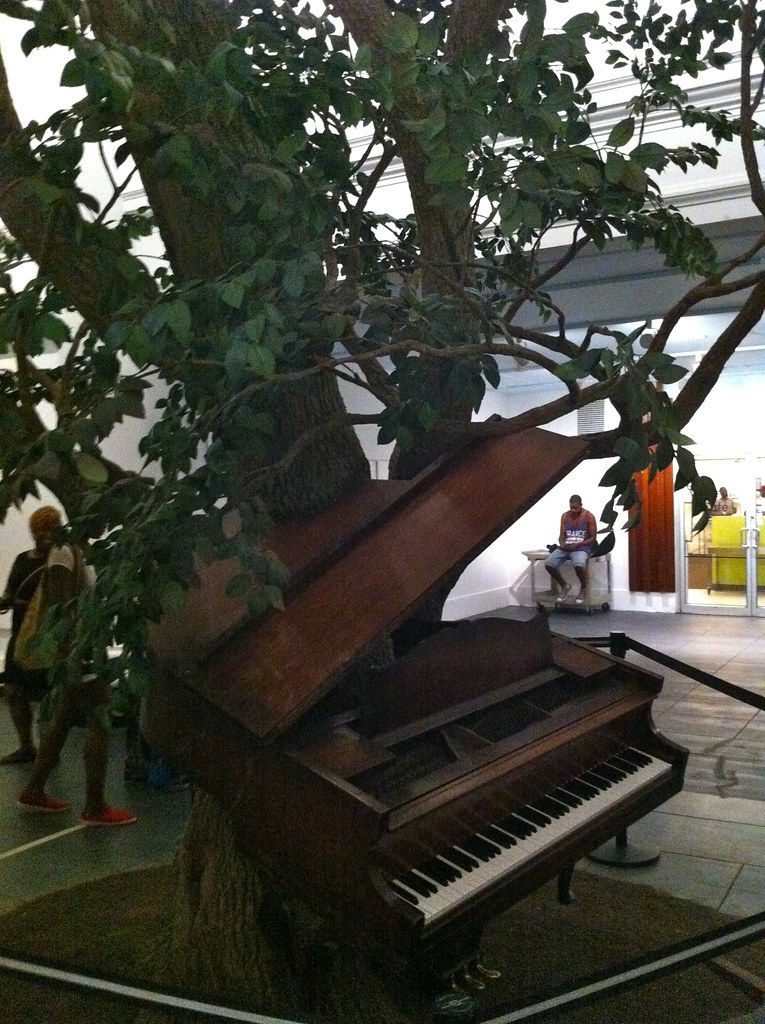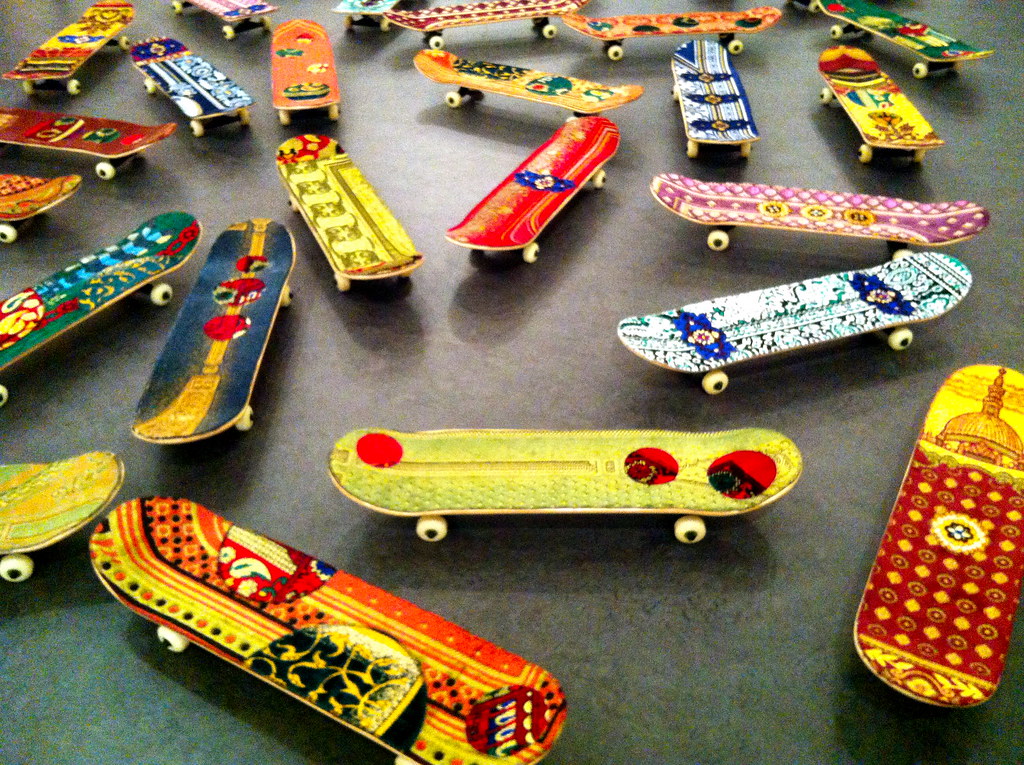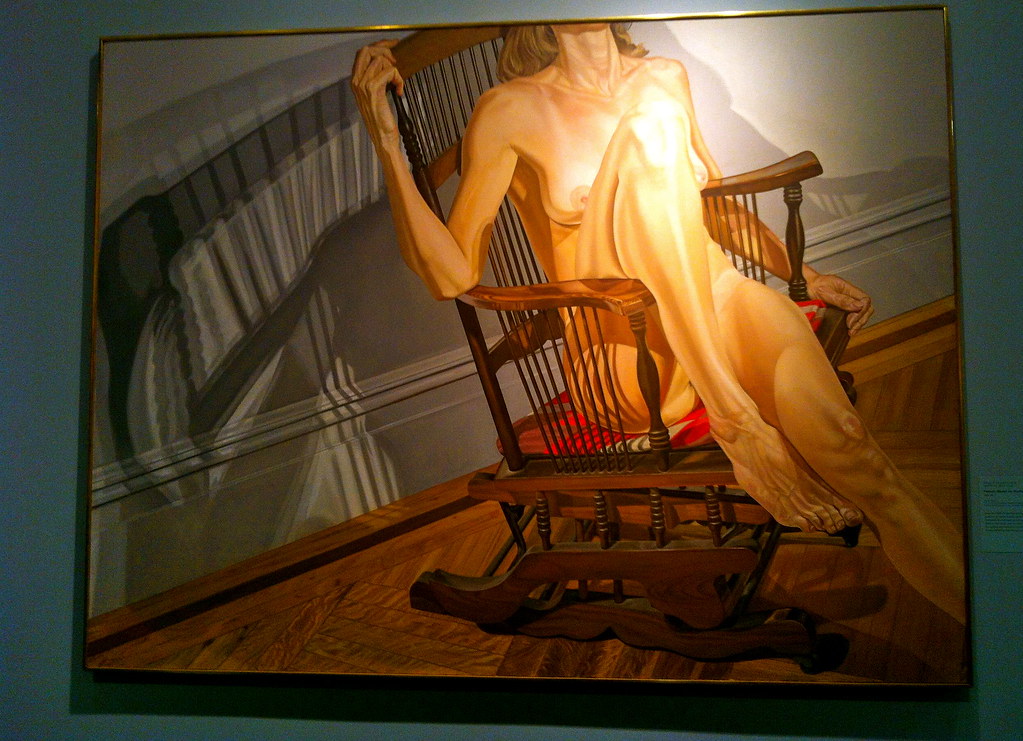 This post was meant to precede the Brooklyn Museum’s Target First Saturday this past weekend, but as it turns out, they didn’t even have it this month because of the West Indian-American Day Parade. The first Saturday of every month, the Brooklyn Museum allows free admission for everyone, and hosts a number of (pretty rowdy) events from 5pm-10pm, sponsored by Target.
This post was meant to precede the Brooklyn Museum’s Target First Saturday this past weekend, but as it turns out, they didn’t even have it this month because of the West Indian-American Day Parade. The first Saturday of every month, the Brooklyn Museum allows free admission for everyone, and hosts a number of (pretty rowdy) events from 5pm-10pm, sponsored by Target.
But truth be told, the Target First events are pretty distracting from the art you’re there to see. The museum was packed full when I visited on the first Saturday of August, and it’s clear that most everyone is there for the drinking and music, with very few people bothering to look at all the beautiful things surrounding them.
 |
| Blossom by Sanford Biggers, 2007 |
The outside of the building is incredible – neoclassical architecture reminiscent of the Met, with statues of Old Testament prophets and Greek philosophers lining the exterior. You’d never guess that the inside is fully modernized with glass panels and exposed brick leading you into the center lobby that all the art revolves around.
 |
| Maximum Sensation by Mounir Fatmi, 2010 |
The first floor’s Great Hall exhibit is overwhelming. They’ve collected and curated pieces that in no way go together, but it’s interesting to compare these works that came from completely opposite times and cultures. They call it, Connecting Cultures, A World in Brooklyn and it focuses on three simplistic themes: connecting places, people, and things, with juxtaposed artworks for each section. One of my favorite pieces from the whole museum was sitting just outside this exhibit: a piano (working keyboard included) with a tree growing up out of the center of it. It’s called “Blossom,” and could have only been more beautiful if the tree was actually real.
 |
| Grey Area (Brown Version) by Fred Wilson, 1993 |
The first floor is also home to a pretty extensive collection of African art. The art of Asia and the Isalmic World finds a home on the second floor, and they have nearly a whole floor’s worth of Ancient Egyptian work, complete with decorated walls and ceilings matching the ancient vibe. The third floor also has a fantastic collection of European art surrounding the open court below. It’s separated by country, with translations of each description, determined by the nationality of the artist.
The fourth floor has a lot of great contemporary pieces also circling the open court, one floor directly above the European paintings. Here you can find Mounir Fatmi’s “Maximum Sensation” from 2010: beautifully decorated felt-covered skateboards skattered about on the floor. Walk a bit farther and there’s Fred Wilson’s “Grey Area (Brown Version)”, five different solid shades of the iconic Cleopatra bust lined up in the center of an alarmingly yellow wall from lightest to darkest.
 |
||
| Female Model on a Rocker by Philip Pearlstein, 1977-78 American Art, 5th floor |
On the fifth floor is the Luce Center for American Art, with everything from Native American artifacts to portraits of George Washington; everything from sixteenth century to contemporary American work. The most remarkable part of the museum is here on this floor: the Brooklyn Museum’s Visible Storage Center, where you can see all the works not on view, organized by numbers in clear glass cases. There’s shelves upon shelves of sculptures and rows upon rows of paintings, plus computer screens where you can search for anything you might be looking for. There’s even smaller, more fragile works stored in protective metal drawers.
I loved being taken behind the scenes in this special exhibit, and I honestly believe it’s something every larger-scale museum should have. If the works aren’t being used in a particular themed gallery, that doesn’t mean your visitors should be kept from them, especially since it’s just museum management’s decision to hide them away. Share all your art all the time – because why not?
See all my Brooklyn Museum photos in the Flickr set here.
loading...





While I completely agree with you that the Brooklyn Museum’s visible storage gallery is fantastic, and more museums need to implement it, I would like to comment on the “why not,” as a museum professional. Light is one of the worst enemies of objects. Paints, dyes, and other colorings of every type of object become faded the more light they are exposed to. This is why exhibits need to be constantly switched on, objects need to be taken off display, and storage is kept completely dark when researchers aren’t using them. Secondly, what can be learned about the pieces by just looking at them. While art was made to just be looked at and it can easily be argued that it doesn’t necessarily need explanation, what can you learn about objects such as the Acoma Pueblo pottery from just looking at it, if you have no past knowledge of the culture, or even know that it came from a different culture than some of the other Native American objects in the same case? This might not be the best method for every collection, and it is often damaging to the collection.
Just adding my two cents, even though personally I think that the Brooklyn Museum is doing a wonderful thing with their visible storage.